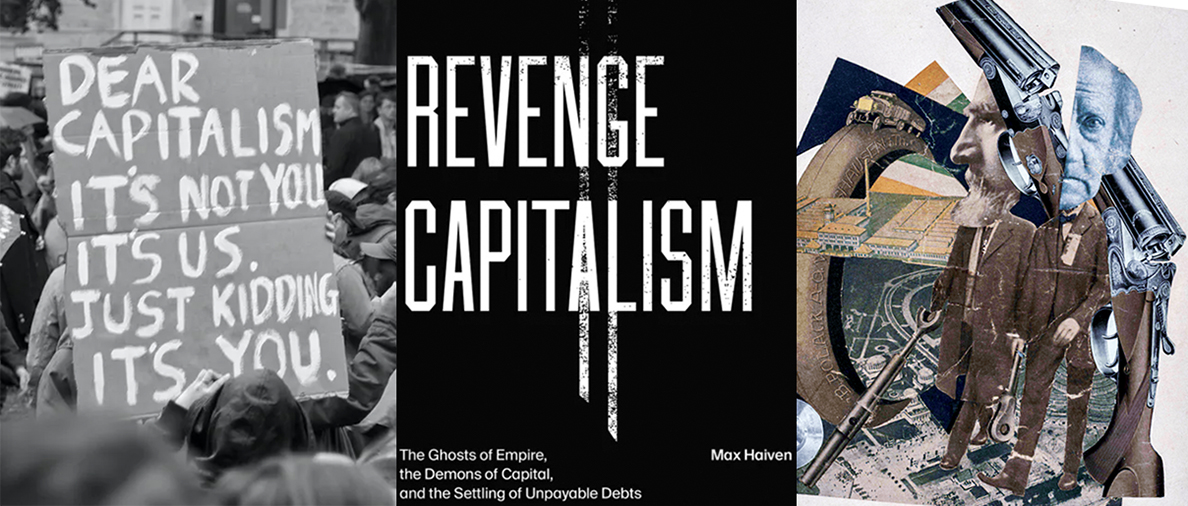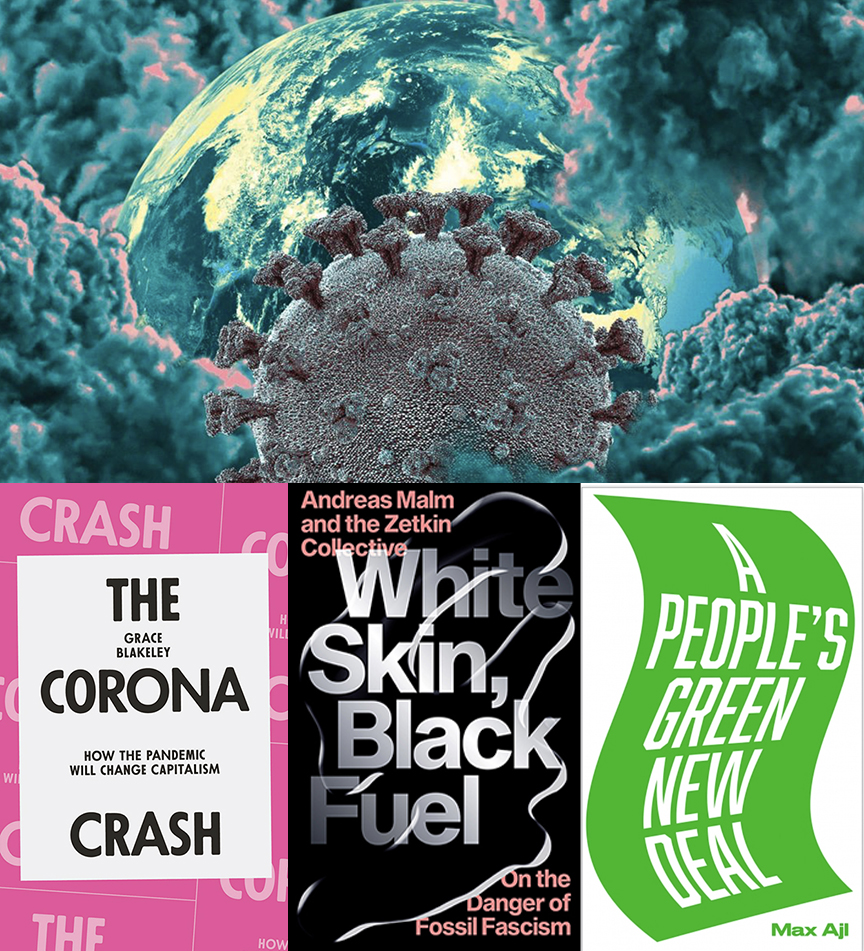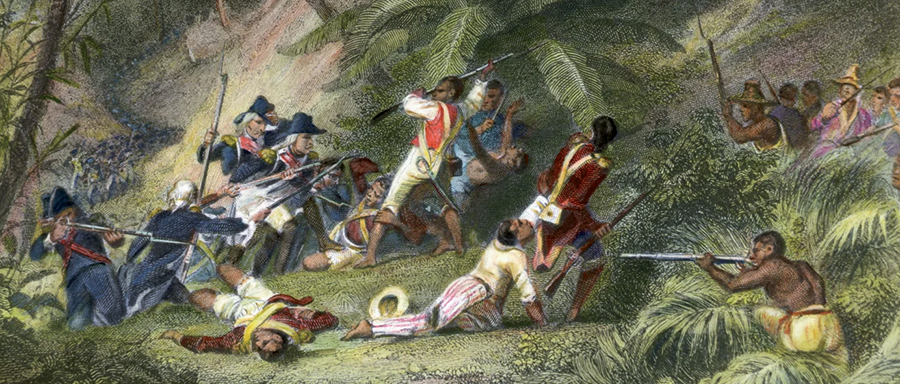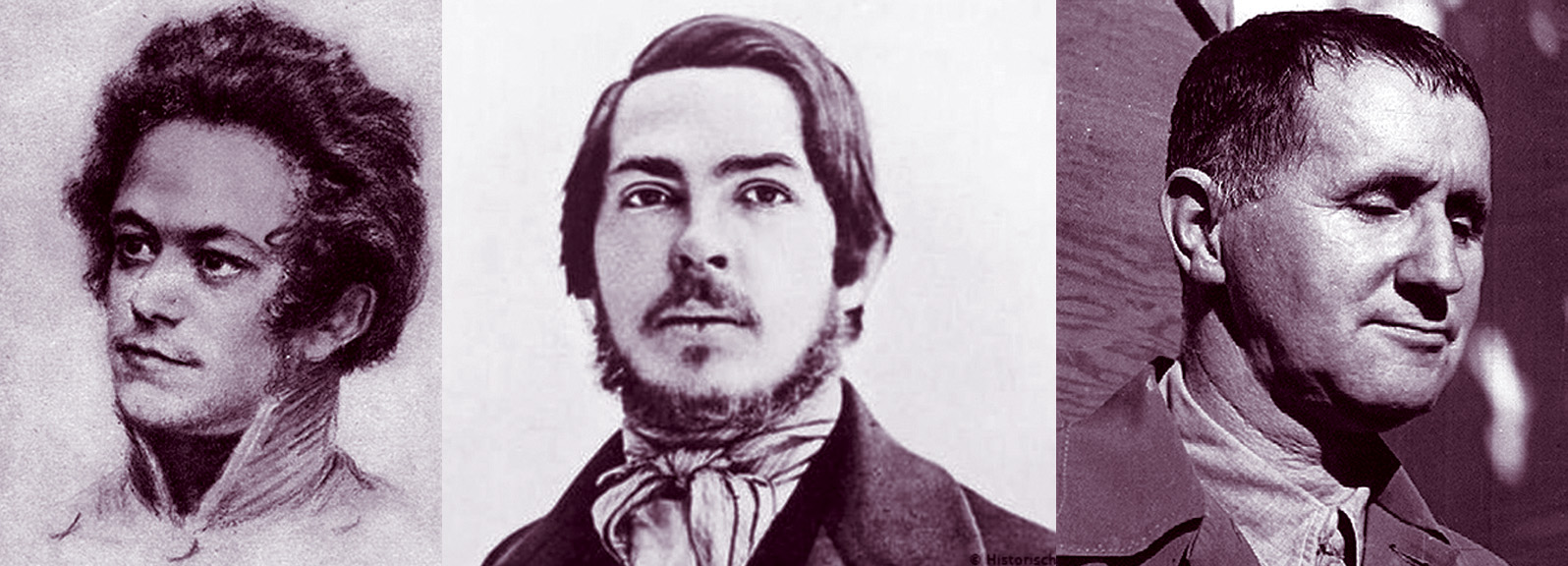Revenge Capitalism with Max Haiven
Online: Zoom link will be provided to registered participantsWeek of Events
Revenge Capitalism with Max Haiven
Revenge Capitalism with Max Haiven
In Revenge Capitalism, Max Haiven argues that this economic vengeance helps us explain the culture and politics of revenge we see in society more broadly. Moving from the history of colonialism and its continuing effects today, he examines the opioid crisis in the US, the growth of 'surplus populations' worldwide and unpacks the central paradigm of unpayable debts - both as reparations owed, and as a methodology of oppression. Revenge Capitalism offers no easy answers, but Max has made a powerful call to the radical imagination: “When you live in someone else’s utopia, all you have is revenge. We live in capitalism’s utopia, a world almost completely reconfigured to suit the needs of accumulation. And the world’s alight, and ours is an age of vengeance. It is vengeance, sadly, that is usually directed at those who least deserve it and which leaves those whose actions led to the current state of affairs, or who benefit from it, free or even more empowered.” —Max Haiven, from his introduction to Revenge Capitalism
Ecosocialism in the Shadow of Covid
Ecosocialism in the Shadow of Covid
We will read and discuss three books: The Corona Crash (Verso), by Grace Blakeley, details how the pandemic is ushering in a new era in which the corporate economy collapses into the arms of the state, and behemoths like Amazon and Netflix balloon in profit and power. White Skin, Black Fuel (Verso), by Andreas Malm and the Zetkin Collective, takes a comprehensive look at how extreme-right currents are responding to ecological crises with with authoritarian and xenophobic proposals while remaining ardent supporters of fossil capital – black fuels to support white supremacy. And A People’s Green New Deal (Pluto), by Max Ajl, engages critically with various Green New Deal proposals and sketches out a radical alternative committed to degrowth, anti-imperialism and agro-ecology.
The Invention of the White Race
The Invention of the White Race
Theodore W. Allen spent 30 years researching the primary sources and writing The Invention of the White Race (2 volumes), which provides a historical materialist analysis of racial oppression and the white identity which emerged as a principal form of social control over rebellious laboring class of European and Africans in the pattern setting colonies of Virginia and Maryland in the late 17th early 18th century.
The Essential Political Writings of Hubert Harrison
The Essential Political Writings of Hubert Harrison
Jeffrey B Perry describes Harrison “as the most class conscious of the race radicals and the most race conscious of the class radicals in those years” adding that he is “a key link in the two great trends of the Civil Rights/Black Liberation struggle—the labor and civil rights trend associated associated with A. Philip Randolph and Martin Luther King, Jr. and the race and nationalist trend associated with Marcus Garvey and Malcolm X.”
Brecht’s Communist Manifesto Today!
Brecht’s Communist Manifesto Today!
Brecht closes his Manifesto replying to Marx and Engels closing line in their Manifesto, “The proletarians have nothing to lose but their chains. They have a world to win,” by answering, “How may the workers break their own class chains? Only by breaking everybody’s chains.” Marx once said that there are historical moments when the working class must gain class-consciousness and become historical subjects. We are at just such a historical moment. Are we up to the task?
The Art of Diane Esmond
The Art of Diane Esmond
Diane Esmond (1910-1981) left an under-appreciated legacy of paintings. Although her artistic eye ranged over many subjects, her culminating evocations of the tropical forest have taken on added importance in the decades since her death. Based for most of her life in France, she displayed her work in Paris in the 1930s and internationally from the ‘50s through the ‘70s. Forced into exile in 1940, she spent the intervening years in New York; the paintings she left behind were seized (and many destroyed) by the Nazi occupation regime






